"And our enemy will find the grave in the foggy fields near Moscow"
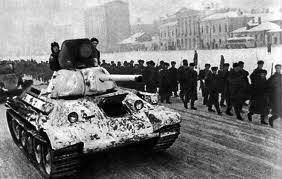 69 years ago, 5 December 1941 of the year, the Soviet forces launched a counteroffensive near Moscow. This was the beginning of the first strategic offensive of our army in the Great Patriotic War, its first major victory. For the invading enemy, the Germans and their allies, the battle near Moscow was not just the first major defeat. It actually meant a breakdown of their hopes for victory in the fleeting campaign — and, therefore, led them to the inevitable loss of the entire war as a whole.
69 years ago, 5 December 1941 of the year, the Soviet forces launched a counteroffensive near Moscow. This was the beginning of the first strategic offensive of our army in the Great Patriotic War, its first major victory. For the invading enemy, the Germans and their allies, the battle near Moscow was not just the first major defeat. It actually meant a breakdown of their hopes for victory in the fleeting campaign — and, therefore, led them to the inevitable loss of the entire war as a whole.Therefore, the Day of the beginning of the counteroffensive near Moscow is deservedly considered in Russia as one of the Days of its military glory.
It is necessary, however, to note that this victory went to our army and the people at a very heavy price. And the battle for Moscow began with the hardest defeat of our troops, in fact, a complete catastrophe that befell the Soviet armies of the Western, Reserve and Bryansk fronts.
The German High Command was well prepared for the start of a decisive offensive, the goal of which was the capital of the Soviet Union, Moscow. In the preceding weeks, troops of their South Army groups (commander Field Marshal Gerd von Runstedt) and Center (Commander Field Marshal Fedor von Bock) surrounded Kiev and defeated most of the Soviet forces of the South-West direction (Commander Marshal Timoshenko) . And the troops of Army Group North (Commander Ritter Wilhelm von Leeb) not only reached the closest approaches to Leningrad, but continued to rush further east — to join the allied Finnish army of Field Marshal Carl Gustav Mannerheim.
Even during the battle of Kiev, when the success of the German troops became apparent, the Wehrmacht High Command had developed a plan for an attack on Moscow. This plan, code-named Typhoon, approved by Hitler, caused the general approval of the generals and field marshals at a meeting held in September 1941 of the year near Smolensk. (It is already after the war, in their memoirs, they will tell that all the time Hitler was imposing "fatal decisions" on them, but the generals themselves were always against it).
Hitler assigned the honor of the conquest of the capital of the Bolsheviks and other “non-minor” to von Bock and his Army Group Center, to which, however, some of the troops from the South and North groups were also transferred. Army Group Center now included the 2nd, 4th, 9th Field Armies, 2nd, 4th, and 3rd tank groups. This group included 77 divisions, including 14 tank and 8 motorized. This amounted to 38% of the infantry and 64% of the tank and motorized divisions of the enemy, operating on the Soviet-German front. As of October 1, the enemy grouping aimed at Moscow totaled 1,8 million people, more than 14 thousand guns and mortars, 1700 tanks and 1390 aircraft.
The entire mass of troops of the “Center” group deployed for an offensive on the front from Andriapol to Glukhov in the zone bounded from the south by the Kursk sector, from the north by Kalinin. In the area of Dukhovshchina, Roslavl and Shostka, three strike groups were concentrated, based on tank groups.
Before his troops, von Bock set the task to surround and destroy Soviet troops in the area of Bryansk and Vyazma, then by tank groups to cover Moscow from the north and south and to simultaneously capture Moscow from the wings and infantry in the center.
The offensive was secured and logistical. It will take time, and the German generals will cite the unwillingness of the rear, supply difficulties, stretched communications and bad roads. And in September, the 1941 of the year in the German General Staff considered that the supply situation was satisfactory everywhere. The work of the railways was recognized as good, and the motor transport turned out to be so much that part of it was put into reserve.
Already in the course of the actual operation “Typhoon”, October 2, Adolf Hitler announced to his soldiers: “For three and a half months, prerequisites were finally created to crush the enemy with a powerful strike before the onset of winter. All the preparation, as far as it was in human power, is over. Today begins the last decisive battle of this year. "
The first "Typhoon" operation was launched by the enemy's southern strike force, led by the famous tankman Heinz Guderian. September 30 Guderian attacked the troops of the Bryansk Front from the region of Shostka, Glukhov in the direction of Orel and bypassing Bryansk from the south-east. October 2 went on the offensive the remaining two groups from the regions Dukhovshchina and Roslavl. Their attacks were directed at converging directions to Vyazma in order to reach the main forces of the Western and Reserve fronts. In the early days, the enemy offensive developed successfully. He managed to reach the rear of the 3 and 13 armies of the Bryansk Front, and west of Vyazma - surround the 19 and 20 troops of the Western and 24 and 32 armies of the Reserve Fronts.
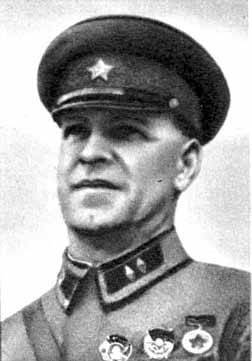 As a result, the majority of our troops, which covered the western and south-western approaches to the capital, were defeated by the enemy in the very first days or were surrounded. Of approximately 1250, by the beginning of the German offensive, Georgi Zhukov, who took command of the front on October 10, managed to assemble almost more than 250 thousands under his command at the beginning of the German offensive of the Western and Reserve Fronts.
As a result, the majority of our troops, which covered the western and south-western approaches to the capital, were defeated by the enemy in the very first days or were surrounded. Of approximately 1250, by the beginning of the German offensive, Georgi Zhukov, who took command of the front on October 10, managed to assemble almost more than 250 thousands under his command at the beginning of the German offensive of the Western and Reserve Fronts.A little better was on the Bryansk front - his army managed to break through from the environment, but lost half to two-thirds of the personnel.
Field Marshal von Bock, of course, boasted, declaring that he had captured 670 thousand Red Army soldiers under Vyazma, and destroyed 330 thousand, thus obtaining a round and beautiful figure of 1 million. But our losses to the captives and those killed were, in fact, numbered in the hundreds of thousands.
About 80, thousands of our fighters managed to make their way out of the encirclement, much more (but there is no exact figure) ran around the villages, and to both sides of the front. Subsequently, tens of thousands of them join the partisans, or join the cavalry corps of General Belov and the paratroopers of General Kazankin operating in the German rears. Even later, in the 1943 year, after the final liberation of these areas, more than 100 thousand Red Army soldiers, mainly from the Vyazma encircling units, were “re-mobilized” into the Red Army. But it will be later - and in October 1941 of the year, a number of directions leading to Moscow were blocked except by police squads.
The units, which were surrounded, commanded by General Mikhail Lukin, fought for almost 10 days, and for this time 28 of the German divisions held down. Now we have “historians” claiming that, they say, those who were surrounded have shown themselves to be unimportant, they held out nothing at all. But Paulus, they say, lasted more than three months in the cauldron! I will not go into details, I will only say that I consider such statements to be swinish. People fulfilled their duty to the Motherland as best they could. And they played their part in defending Moscow. And the German tank units did not dare, without the support of the infantry, to make a throw on the barely covered Moscow.
As the well-known military historian Viktor Anfilov writes, “mainly the Moscow militia, fighter battalions, cadets of military schools and other parts of the Moscow garrison, NKVD troops and the police fought against the avant-garde enemy units on the Mozhaisk defensive line. They honorably withstood the test of battle and ensured the concentration and deployment of parts of the Headquarters reserve. Under the cover of the Mozhaisk line, the troops of the Western Front were able to clean up and re-form themselves.
And in the second half of October, when the armies of the Center group, having broken the resistance of the units surrounded at Vyazma, moved to Moscow, they again met an organized front of defense and were forced to break through it again. From October 13, fierce battles took place on the lines of Mozhaisk and Maloyaroslavetsky, and from October 16 and Volokolamsk fortified areas.
For five days and nights, the troops of the 5 Army repelled the onslaught of the motorized and infantry army corps. Only October 18 enemy tanks broke into Mozhaisk. On the same day, Maloyaroslavets fell. The situation near Moscow has escalated. It was then, October 16, that shameful day of the “great Moscow panic” occurred, which our liberal historians love to moan about. By the way, contrary to their assertions, in Soviet times no one hid this shameful episode, although, of course, he did not stick it out. Konstantin Simonov in the Living and the Dead story (written back in 1950-s) spoke of it this way: “when all this was left in the past and when someone in his presence spoke about 16 of October with bitterness and bitterness, Sintsov was stubbornly silent : it was unbearable for him to remember Moscow of this day, as it is unbearable to see your dear face distorted by fear.
Of course, not only in front of Moscow, where the troops fought and died that day, but in Moscow itself there were enough people who did everything in their power not to surrender it. And that is why she was not surrendered. But the situation at the front near Moscow really seemed to be the most fatal image of the entire war, and many in Moscow that day were in despair ready to believe that tomorrow the Germans would enter it.
As always, in such tragic moments, the firm faith and imperceptible work of the first was not yet obvious to everyone, just promised to bear fruit, and confusion, and grief, and horror, and despair of the second beat into the eyes. That was, and could not be, on the surface. Tens and hundreds of thousands of people, fleeing the Germans, got up and rushed out of Moscow that day, flooded its streets and squares in a continuous stream, rushing to the stations and leaving the highway to the east; although, in all fairness, not so many people from these tens and hundreds of thousands were then rightly to condemn for their flight story».
Indeed, it seemed to many then that Moscow was on the verge of falling, and the war was lost. It was then that a decision was made to evacuate from Moscow to Kuibyshev (the then name of Samara) the government and all the most important institutions, factories, values, diplomatic missions and even the General Staff. Stalin himself, however, remained in Moscow - and this, undoubtedly, is his merit before history. Although he was not sure of the success of the defense of Moscow.
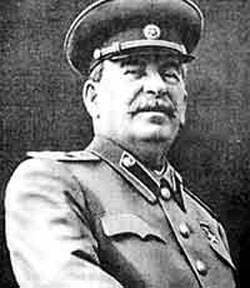 As George Zhukov recalled, on one of the particularly difficult days of the enemy offensive, Stalin asked him: “Are you sure that we will keep Moscow?” I ask you this with pain in the shower. Speak honestly like a communist. ”
As George Zhukov recalled, on one of the particularly difficult days of the enemy offensive, Stalin asked him: “Are you sure that we will keep Moscow?” I ask you this with pain in the shower. Speak honestly like a communist. ”Zhukov replied: “Moscow will definitely be retained. But you need at least two more armies. And at least 200 tanks.
Both Stalin and Zhukov perfectly understood what such forces mean, and how difficult it is to get them from somewhere.
We like to talk about Siberians and about the Far Eastern divisions. Yes, they played a prominent role, and it was in those days that an order was issued to transfer three rifle and two tank divisions from Moscow to the Far East. And they really, played an important role in the defense of Moscow - only later. Look at the map of the country. It will take at least a week and at least fifty echelons to just transfer one division from Chita. And they will need to overtake through the overloaded railway network - after all, the evacuation to the East of factories and people continues.
Even the reinforcements from the relatively close Volga and Ural regions arrived with difficulty.
The 32-I Red Banner Saratov Division of Colonel Viktor Polosukhin, who arrived just in these October days to defend the Borodino field, was in place so on time only because 11 of September began to redeploy it from the Far East. For the rest, the creeping front had to be held by cadets, militias (Moscow put them on 17 divisions), fighter battalions (only in the city they created 25, not counting the area) and parts of the NKVD — the ones we are used to representing as snickering reptiles in caps with a blue top and crimson band, which they could only shoot in their backs.
And two months these forces exhausted the Germans with defensive battles, suffering heavy losses. But the Germans, as their commanders recall, also carried them: by December there were 15-20% in the companies in the companies. In the tank division of General Routh, burst forth from the rest, right up to the Moscow Canal, only 5 tanks remained. And by November 20 it became clear that the breakthrough to Moscow had failed, and on November 30, the commander of Army Group Center had concluded that his troops did not have the forces to attack. In the first days of December 1941, the German troops actually went over to the defense, and it turned out that the German command had no plans for this case, because in Berlin there was a prevailing view that the enemy did not have the forces both for a prolonged defense and for a counterattack.
Partly, by the way, in Berlin were right. Although the Soviet Stavka and the reserves from all over the country, and even from other fronts, it was not possible to create either numerical superiority or superiority in technology at the beginning of the transition to the offensive. There was only one moral advantage. Our people saw that “the German is not the one”, that “the German is running out of steam,” and that there is nowhere to retreat. However, according to the German General Blumentrit (Chief of Staff of the 4 Army Field Marshal Kluge), “it was clear to every soldier of the German army that our life or death depends on the outcome of the battle for Moscow. If the Russians here defeat us, we will have no hope left. ” But, apparently, the Russian intention to defend Moscow turned out to be stronger than the Germans - to take it.
And, having reflected all the attacks of the Germans, in the first days of December the Soviet command planned a strategic offensive - the first for the entire Patriotic War. According to Zhukov’s plan, the front had the task of smashing the 3 and 4 tank groups in the Klin – Solnechnogorsk – Istra and 2 Tank Guderian groups in the area of Tula – Kashira with sudden sweeping strikes and then covering and crushing the 4 –– Army von Kluge, advancing on Moscow from the west. The South-Western Front was instructed to defeat the enemy grouping in the Yelets area and assist the Western Front in defeating the enemy in the Tula direction. Unified planning and leadership of the Supreme High Command Headquarters ensured operational-strategic interaction of three fronts. At the same time, the counterattack of the Soviet troops near Rostov and Tikhvin deprived the German command of the opportunity to transfer reinforcements to Moscow from the Army groups "South" and "North."
The peculiarity of the Soviet counteroffensive near Moscow was that the Red Army forces did not exceed the Wehrmacht forces, except for the number of aircraft. The main striking force — tank troops — consisted in the bulk of the T-26 and BT tanks; so frustrating Germans T-34 and HF were still few. One tank building center, Kharkov, was captured by the Germans. The other, Leningrad, was in a blockade; the evacuated power in the Urals and Siberia was only unfolding. And the main supplier of new tanks remained only Stalingrad factories. Thus, the German tank forces could fight with the Soviet on an equal footing, without blaming the failures on the quality superiority of the T-34 and KV.
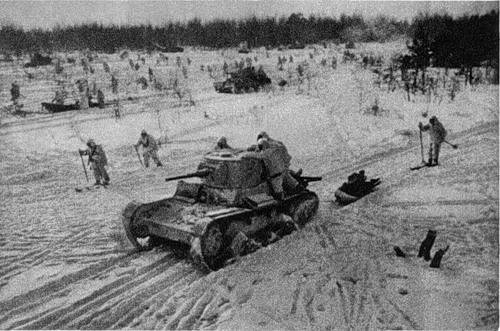
And since the Soviet command did not have a decisive advantage in people or technology, in order to achieve superiority in the places of the main attacks inside each of the fronts, serious regroupings had to be made, leaving only a minor amount of forces in the secondary sectors.
So, for example, the commander of the Kalinin front, General Ivan Konev, reported to the Headquarters that, due to a lack of forces and tanks, the front could not accomplish the task. Konev proposed to limit the actions of the front to a private operation to capture Kalinin (the then name of Tver). However, this contradicted the general plan of the counter-offensive, and General Vasilevsky, Deputy Chief of the General Staff, was sent to the front. Together with Konev, they disassembled the forces of the Kalinin Front in detail, removing the divisions from secondary directions and strengthening their artillery from the reserves of the front. All this and the suddenness of the Soviet counterstrike further determined the success of the Kalinin front offensive.
The transition to the counteroffensive took place without an operational pause and came as a complete surprise to both the Wehrmacht top leadership and the frontline command. The first December 5 1942 of the year went on the offensive Kalininsky front. December 6 began the offensive of the Western and Southwestern fronts.
The Kalinin Front broke through the enemy’s defenses on the Volga south of Kalinin and by the end of December 9 took control of the Kalinin-Moscow railway. On December 13, the formations of the armies of the Kalinin Front closed south-west of Kalinin, cutting off the enemy’s Kalinin enemy grouping routes. The German garrison was asked to capitulate. After the rejection of the December ultimatum 15, fighting for the city began. The next day, Kalinin was completely cleared from the enemy. The Germans lost only thousands of soldiers and officers killed over 10.
On December 6, the troops of the right wing of the Western Front, in cooperation with the Kalinin Front, launched an offensive against the 3 and 4 tank groups of Reinhard and Gepner. The army that began the offensive in the morning of December 6, reinforced by 6 by the Siberian and Ural divisions, broke through the enemy defenses north of Klin. At the same time, the 1-I Shock Army suggested crossing the Moscow-Volga Canal near Dmitrov. The depth of the breakthrough was in the evening 6 December 17 km. On 7 December, the breakthrough expanded to 35 km along the front and 25 km in depth.
December 9 5-I army of General Govorov with a fight forced the river and occupied several settlements on the north bank. December 11 on the right wing of the Western Front, the forward detachment entered the Leningradskoye Highway north-west of Solnechnogorsk. On the same day Solnechnogorsk and Istra were cleared from the enemy.
15 December, Wedge was released. In the battles for the city, the 2 motorized and 1 armored German divisions were defeated. During 20 – 24 December, the armies of the right wing of the Western Front reached the line of the Lama and Ruza rivers, where the enemy had prepared a solid defense in advance. Here it was decided to suspend the offensive and gain a foothold on the achieved lines.
In the central sector, the troops of the Western Front bound the main forces of the 4 Army von Kluge. December 11 The 5 Army managed to break through the German defenses in the Dorokhov area.
December 18 After a short artillery preparation, the 33 Army began an offensive in the direction of Borovsk. 25 December The 175 th 33 th MSP routed Naro-Fominsk from the south and reached its western outskirts, cutting off the retreat to Borovsk for the Germans. On January 4 Borovsk, Naro-Fominsk and Maloyaroslavets were released.
December 30, after heavy fighting by the forces of the two armies of the left wing of the Western Front, Kaluga was liberated. Following Kaluga, the cities of Belev, Meshchovsk, Serpeysk and Mosalsk were taken. By January 7, the troops of the left wing of the Western Front reached the line Detchino – Yukhnov – Kirov – Lyudinovo.
Substantial assistance to the troops of the Western Front was rendered by the right wing of the South-Western Front. Thanks to her actions 10 December, the enemy grouping in the Yelets area was surrounded. December 12 cavalry of the 5 Cavalry Corps defeated the headquarters of the surrounded corps (the corps commander managed to escape by plane). The enemy’s encircled troops attempted to break through to the west, attacking the 3 and 32 cavalry divisions. December 15 Commander of the German 134 Infantry Division, General Cohenhausen personally led the breakthrough. The cavalrymen repulsed the attacks, General Cohenhausen was killed, the remaining Germans surrendered or fled through the forests. In battles in the Yelets area, the 45-I (General Mainner), 95-I (General von Armin) and 134-I infantry divisions of the enemy were completely defeated. The enemy lost 12 thousand people killed on the battlefield.
In January, 1942, the first phase of the counteroffensive near Moscow was completed. In different directions, the Germans were dropped on 100 – 250 km. And although there were still years of hard and bloody battles, it has already become clear to all: we will not lose the war, and the victory will be ours. In this, perhaps, the main significance of the Moscow battle.
- Maxim Khrustalev
- http://news.km.ru/i_vrag_nash_otyshhet_mogilu_v_tu"rel =" nofollow ">http://news.km.ru/i_vrag_nash_otyshhet_mogilu_v_tu
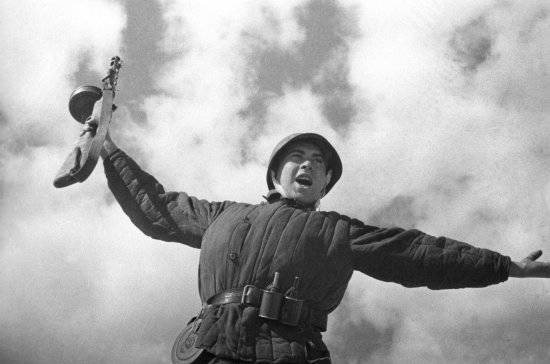
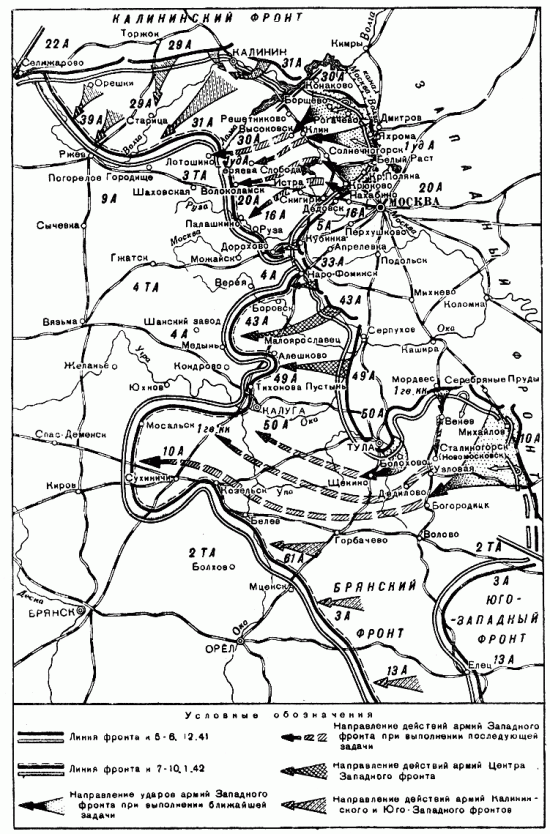
Information